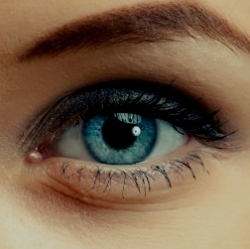
The new contact lens is 1.55 millimeters thick and features a very thin, reflective telescope, which allows the user to zoom in and out in literally a wink. The telescopic contacts are made with a rigid lens known as a scleral lens, larger in diameter than the more familiar soft contacts, but useful for special cases, such as for people with irregularly shaped corneas.
Despite their size and stiffness, scleral lenses are safe and comfortable for special applications, and are an attractive platform for technologies such as optics, sensors, and electronics. So how does it all work? According to the research team, “Small mirrors within bounce light around, expanding the perceived size of objects, magnifying the view, so it’s like looking through low magnification binoculars.” That’s right. Telescopic vision.
Other vital improvements include giving the lens more oxygen permeability by putting in miniscule air channels approximately 0.1 mm wide to allow oxygen to flow around and underneath the lens. Also developed in tandem with the lens are ‘smart’ glasses that will respond to the wearer’s winks (but not blinks), allowing the wearer to switch almost effortlessly back and forth between magnified vision and regular vision; sort of a Clapper for your super vision…’wink on, wink off’.
Besides its potential military applications (the project was originally funded by the US government research agency DARPA), this new technology holds enormous potential for the roughly 285 million people worldwide who are visually impaired due to age-related macular degeneration (AMD). AMD is one of the leading causes of blindness among older adults.
While there are currently glasses for people with AMD, they tend to look awkward and cumbersome, because of their mounted telescopes, and can interfere with social interaction. What’s more is that they don’t track eye movement so they require continual positioning of the eyes and tilting of the head to use them. A contact lens with such capabilities would allow for easier reading as well as better recognition of faces and objects.
